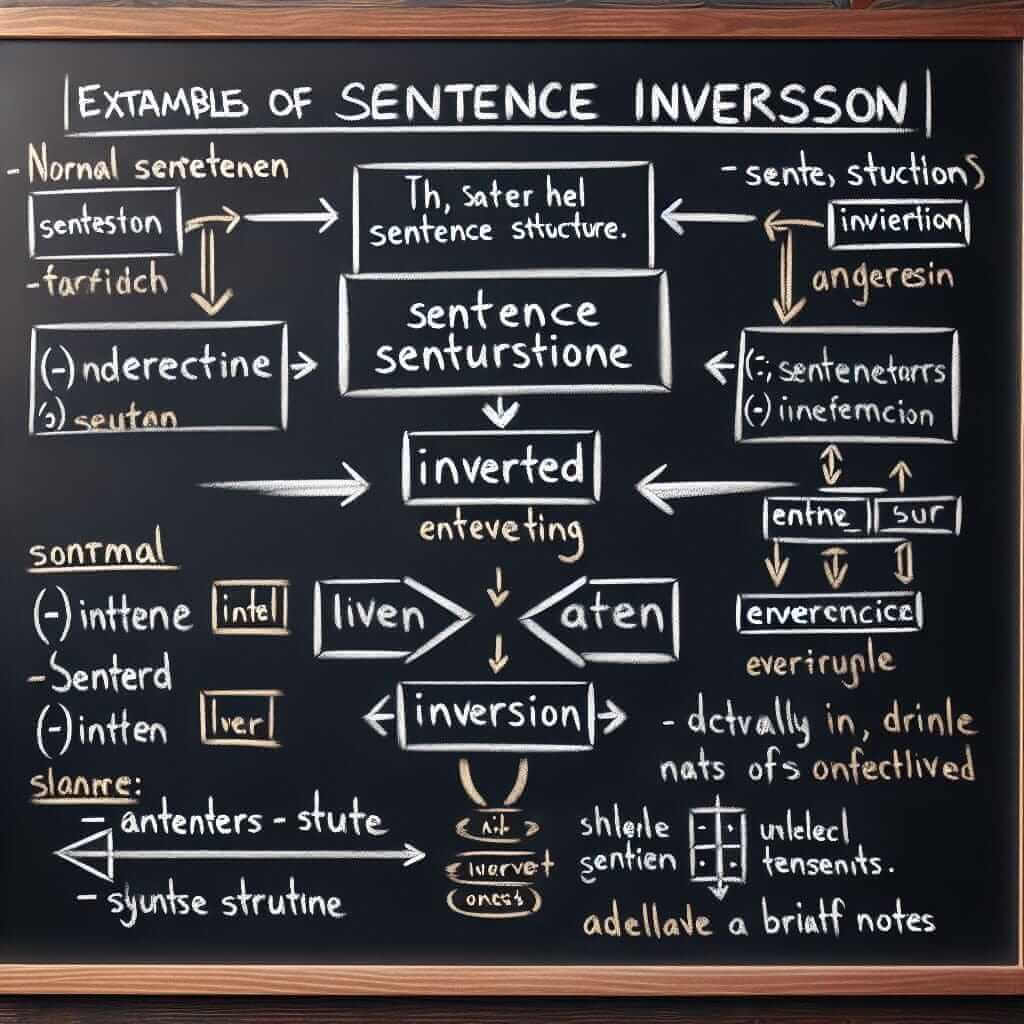“At no time did I feel unsafe.” This sentence, while grammatically flawless, might sound a little unusual to your ears. This is because it uses a grammatical structure called inversion, a slightly advanced technique that can significantly enhance your IELTS writing and speaking scores, pushing you closer to that coveted Band 7 or 8.
Consider these examples:
- Never before had I witnessed such breathtaking scenery. (Speaking, describing a travel experience)
- Not only does recycling conserve resources, but it also reduces pollution. (Writing Task 2, discussing environmental issues)
- Under no circumstances should you share your personal information online without proper verification. (Writing Task 1, describing a process diagram about online safety)
In each of these examples, the sentence structure deviates from the typical Subject-Verb-Object order. This is the hallmark of inversion – a powerful tool to add variety, emphasis, and a touch of sophistication to your language.
Understanding Inversion
Inversion, in the context of English grammar, refers to the reversal of the usual order of words in a sentence, particularly the placement of the verb before the subject. It’s often used with negative adverbs or adverbial phrases to add emphasis and create a more formal, literary tone.
When is Inversion Used in IELTS?
Inversion is not an everyday grammatical structure; it’s reserved for specific situations to achieve particular effects. In the context of IELTS, understanding when to use inversion can significantly elevate your language score:
- Formal Writing and Speaking: Inversion lends a formal and academic tone to your writing and speaking, demonstrating a strong command of grammatical structures.
- Emphasis: Inversion effectively emphasizes the negative adverb or adverbial phrase, drawing the reader’s or listener’s attention to it.
- Variety and Style: Using inversion strategically can prevent your writing and speaking from sounding monotonous, showcasing a wider range of grammatical constructions.
Mastering Inversion: Form and Function
Now that we’ve established the “why” of inversion, let’s delve into the “how.” Understanding the form and function of inversion is crucial for its correct application.
Formula for Inversion:
Negative Adverb/Adverbial Phrase + Auxiliary Verb + Subject + Main Verb
Examples:
- Never before (negative adverbial phrase) had (auxiliary verb) I (subject) seen (main verb) such a thing.
- Rarely (negative adverb) does (auxiliary verb) he (subject) arrive (main verb) on time.
Breakdown by Parts of Speech:
-
Negative Adverbs and Adverbial Phrases: These are essential triggers for inversion. Some common examples include:
- Never
- Rarely
- Seldom
- Hardly ever
- Not only
- No sooner…than
- Under no circumstances
- At no time
- On no account
- In no way
-
Auxiliary Verbs: These are helping verbs that are used together with a main verb to create a verb phrase. Common auxiliary verbs used in inversion include:
- Do/does/did
- Have/has/had
- Be (is/am/are/was/were)
- Modal verbs (can/could, will/would, may/might, should)
-
Subject and Main Verb: These follow the auxiliary verb in the inverted structure.
Applying Inversion in IELTS: Examples and Analysis
1. Writing Task 1 (Describing Trends)
Original: The number of tourists visiting the museum never decreased despite the economic recession.
Inversion: Never before did the number of tourists visiting the museum decrease, despite the economic recession.
Analysis: By using inversion, the sentence becomes more emphatic and impactful. The reader’s attention is immediately drawn to the fact that the museum’s tourist numbers remained stable.
2. Writing Task 2 (Expressing Opinions)
Original: Technology is beneficial in many ways, but it can also have negative impacts on society.
Inversion: Not only is technology beneficial in many ways, but it can also have negative impacts on society.
Analysis: The inversion here creates a more balanced and sophisticated sentence structure, effectively highlighting both the advantages and disadvantages of technology.
3. Speaking Part 3 (Expressing Personal Views)
Original: I have rarely encountered such a complex problem in my field of study.
Inversion: Rarely have I encountered such a complex problem in my field of study.
Analysis: Using inversion in the speaking section, particularly in Part 3 where you discuss more abstract ideas, showcases a higher level of fluency and grammatical range.

Achieving Band 7+ with Inversion
While using inversion correctly can undeniably boost your score, it’s crucial to use it judiciously. Overusing this structure can make your writing or speaking sound unnatural and forced. Aim for a balance between natural flow and sophisticated sentence structures.
Here are some additional tips:
- Context is Key: Don’t force inversion into every sentence. Choose instances where it feels natural and enhances the meaning.
- Accuracy is Paramount: Incorrectly formed inversion is worse than no inversion at all. Make sure you thoroughly understand the grammatical structure before applying it.
- Practice Makes Perfect: The more you practice using inversion, the more confident and natural it will become. Incorporate it into your writing and speaking practice regularly.
Common Pitfalls to Avoid
- Incorrect Auxiliary Verb: Using the wrong auxiliary verb or tense is a common error. For example: Never I had seen such a thing. (Incorrect) Never had I seen such a thing. (Correct)
- Omitting the Subject: The subject is essential even in inverted sentences. For example: Under no circumstances should be late. (Incorrect) Under no circumstances should you be late. (Correct)
- Overuse: Using inversion too frequently can make your language sound stilted and unnatural.
Conclusion:
“At no time did I feel unsafe” – now you know not just what it means, but also how to construct similar sentences, understand their nuances, and utilize them effectively in your IELTS exam. Remember, the key to mastering any grammatical structure, including inversion, lies in understanding its form, function, and appropriate context. Use it wisely, and watch your IELTS score soar!